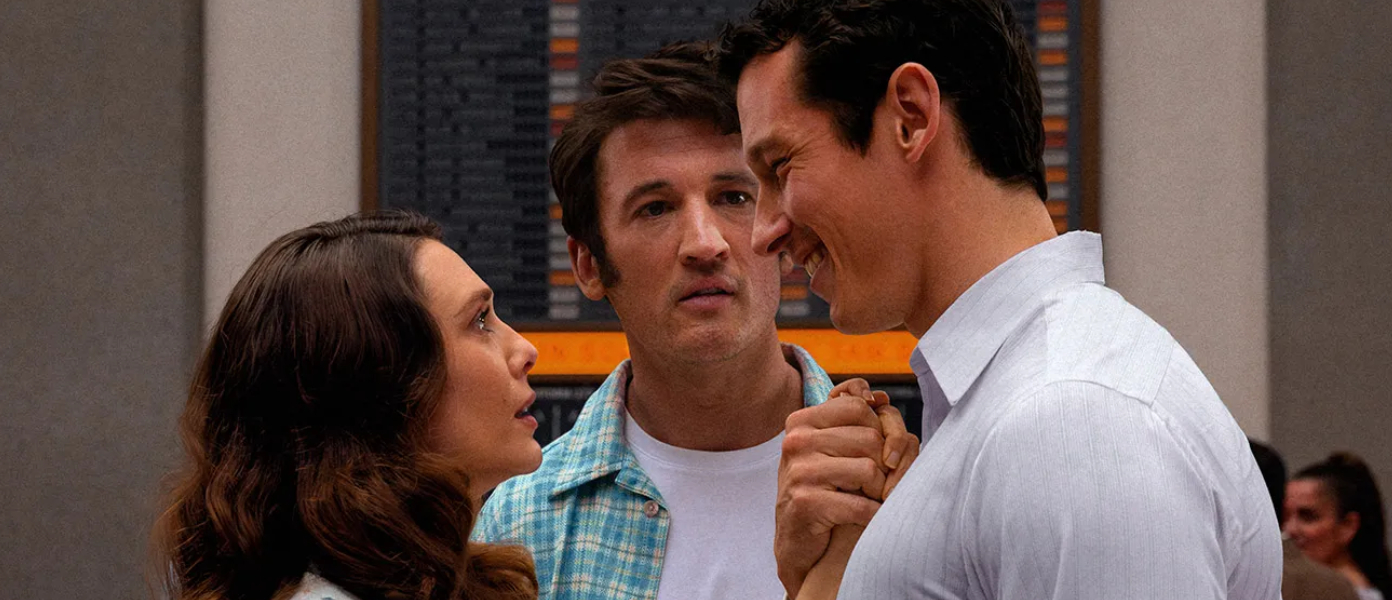![]()
In an afterlife where souls have one week to decide where to spend eternity, Joan is faced with the impossible choice between the man she spent her life with and her first love, who died young and has waited decades for her to arrive.
When two souls find themselves at a crossroad in the afterlife, they are given a rare opportunity to step back into the lives they might have lived. Through a series of carefully constructed scenarios, they explore the “what ifs” that define so much of human experience: the relationships that could have been, the choices that were never made, and the futures that slipped away.
The film begins with a quiet sense of wonder, showing a man and woman being gently guided through a retro-futuristic afterlife agency. There, workers dressed in pastel suits process the dead through a bureaucratic system that feels more like a 1950s insurance office than a place beyond existence. The concept is simple: before choosing where you will spend eternity, you are allowed to test different versions of your potential forever. It is an elegant set-up that captures the film’s mix of humor, warmth, and melancholy.
As the story unfolds, the two leads move through alternate versions of their lives together, each revealing how small choices can create entirely different worlds. Some of these sequences are romantic and lighthearted, while others feel grounded and bittersweet. The film’s pacing occasionally lingers, stretching a few moments longer than necessary, but the ideas are engaging enough to keep viewers invested.
The production design stands out as one of the film’s greatest strengths. The afterlife offices are filled with analog gadgets, rotary phones, and filing cabinets that seem to hum with nostalgic energy. The visual aesthetic evokes the 1950s and early ‘60s, combining pastel tones with clean architectural lines and glowing tube screens. It feels like a place outside of time, part “Loki,” part “The Good Place,” but infused with the softness of an old romance. That sense of familiarity makes the entire concept of eternity feel personal rather than abstract.
While the central performances feel a tad restrained at certain moments, they work within the film’s delicate tone. Among the cast, Da’Vine Joy Randolph is a standout, feeling alive and layered, bringing warmth and wit to the film’s quieter moments. Elizabeth Olsen delivers a nuanced performance that fits perfectly within the story’s reflective tone. Callum Turner, however, feels slightly miscast; while competent, his energy doesn’t always align with the film’s delicate rhythm. The calm dialogue allows the audience to sit in the emotional tension of choices made and chances missed. There are gentle comedic beats sprinkled throughout, and the film’s humor comes more from character reactions than overt jokes. It is the kind of storytelling that favors quiet smiles over loud laughs.
Much of the film’s writing seems designed for viewers who can appreciate its subtle cultural references. There are nods to mid-century television, old advertisements, and even early space-race optimism that older audiences will recognize instantly. For younger viewers, the nostalgic backdrop might read as stylized world-building, but it gives the film a unique flavor that deepens its emotional pull.
At its heart, “Eternity” is less about death and more about reflection. It examines how people carry their pasts and the ways they justify their choices. The afterlife, as presented here, is not a punishment or a paradise but a mirror. It shows you the shape of your life and asks whether you would choose it again. The idea that eternity is something you must actively select is profound, and the film treats it with tenderness rather than spectacle.
In the end, “Eternity” is a film that feels deeply human despite its cosmic premise, and leaves you with a quiet ache. It may not move you to tears, but it lingers, much like lost love, time, and acceptance, presented through a stylish lens that feels as comfortable as it is profound.
“Eternity” is thoughtful, sweet, and beautifully designed. It may run a little long, and its emotional peaks are subdued, but its sincerity carries it through. It invites viewers to consider the simple question that defines every life: if given the chance, would you choose the same eternity all over again?
In Theaters Wednesday, November 26th

